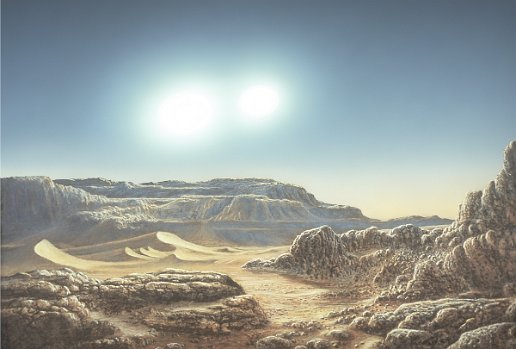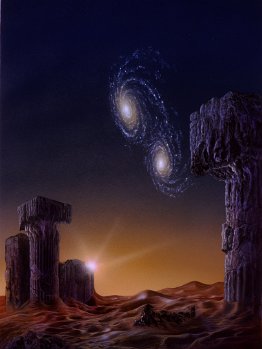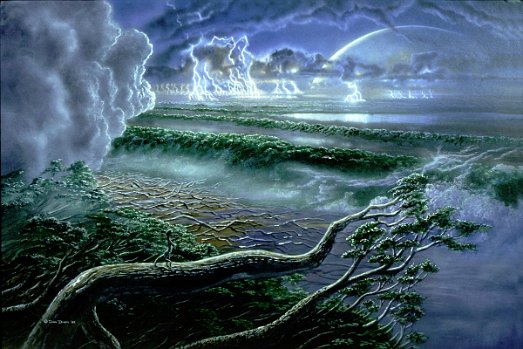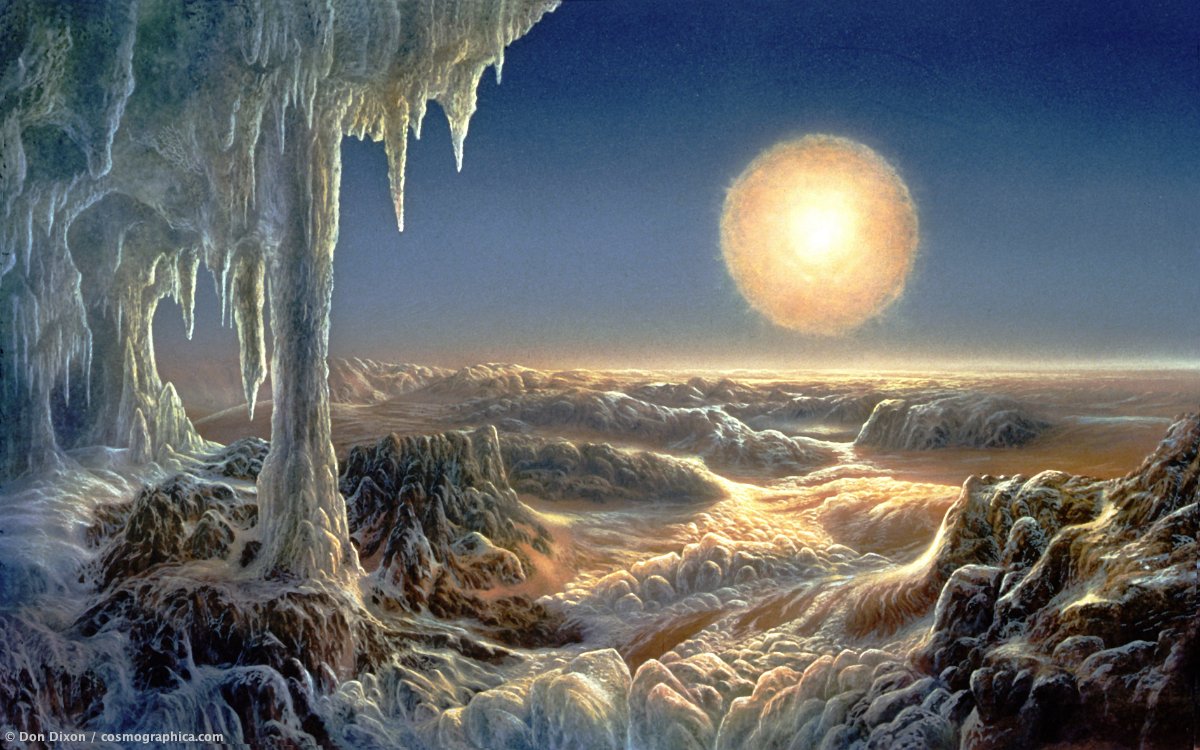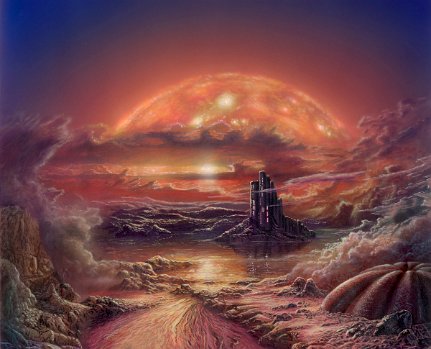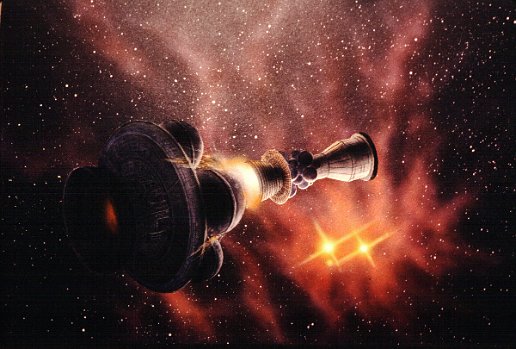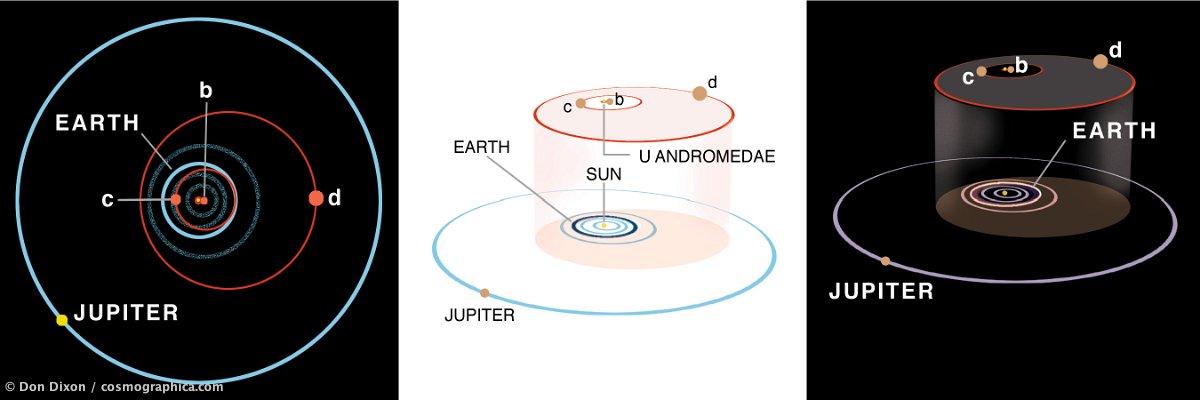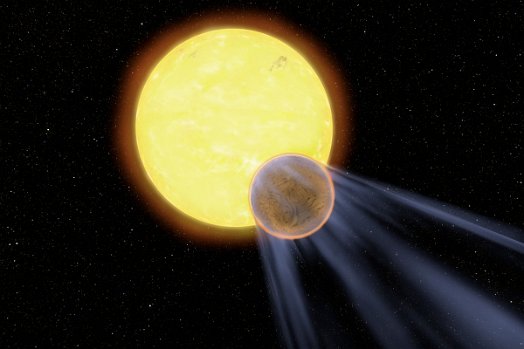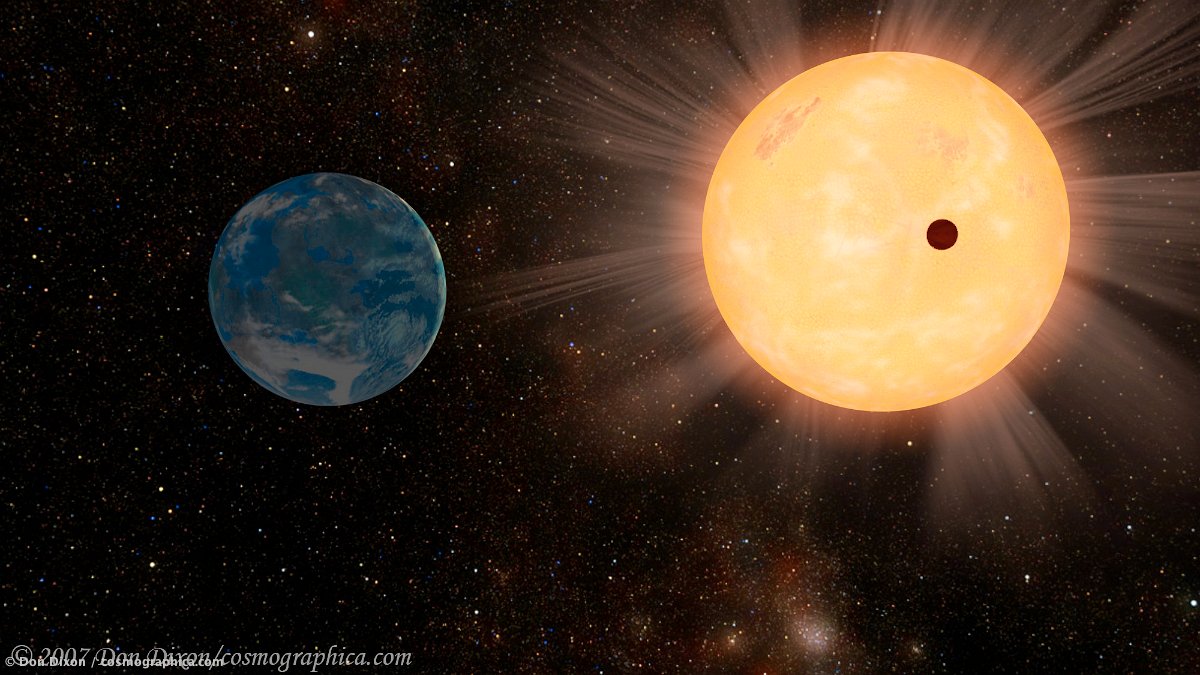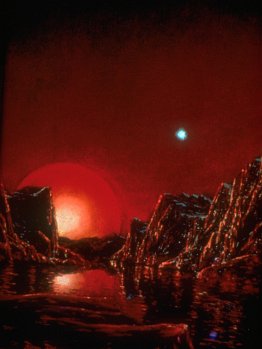
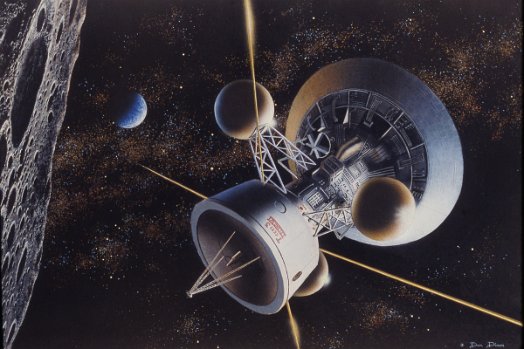
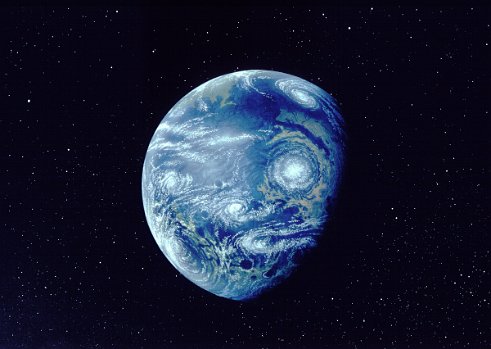
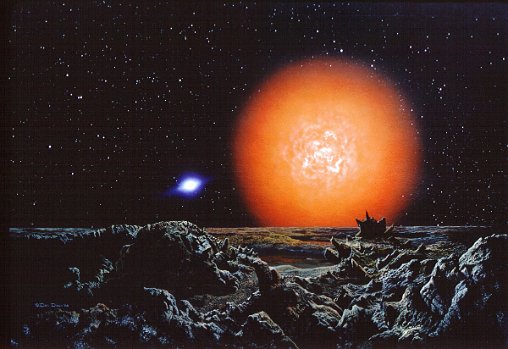
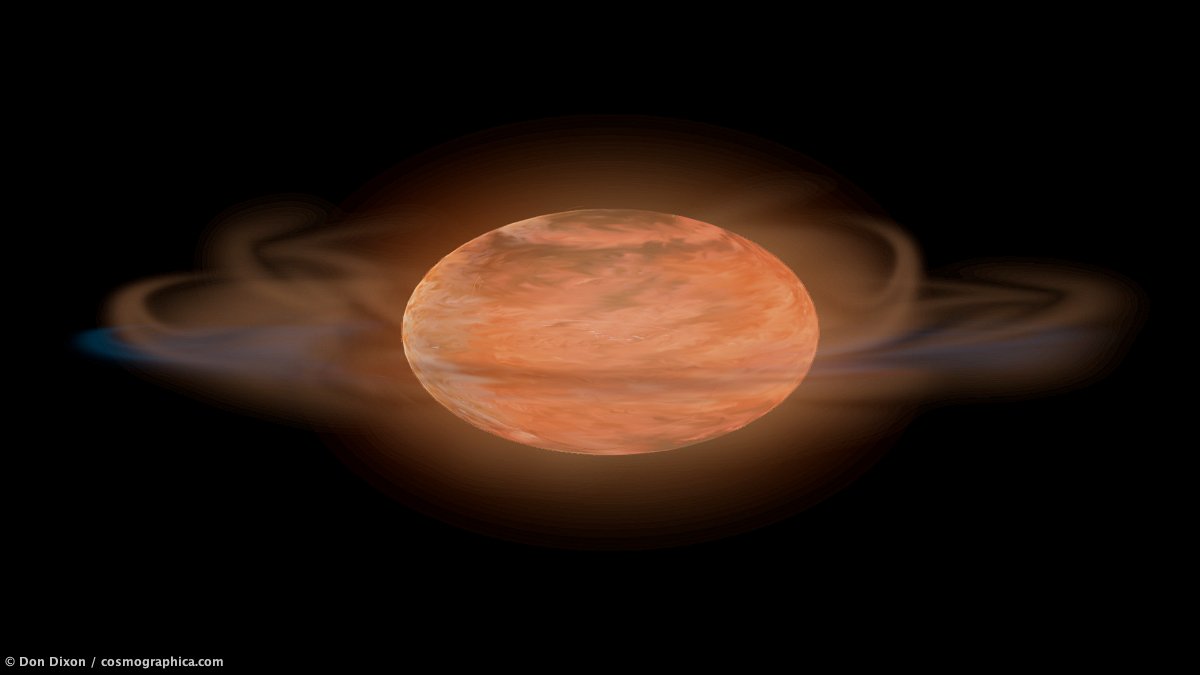
459-super-jovian-forming
A giant planet is distorted by its rapid spin during the final stages of accretion. Tidal interactions with other planets and its parent star, as well as internal friction, will eventually cause it to lose energy and become more spherical. Artwork © 2007 Don Dixon / cosmographica.com
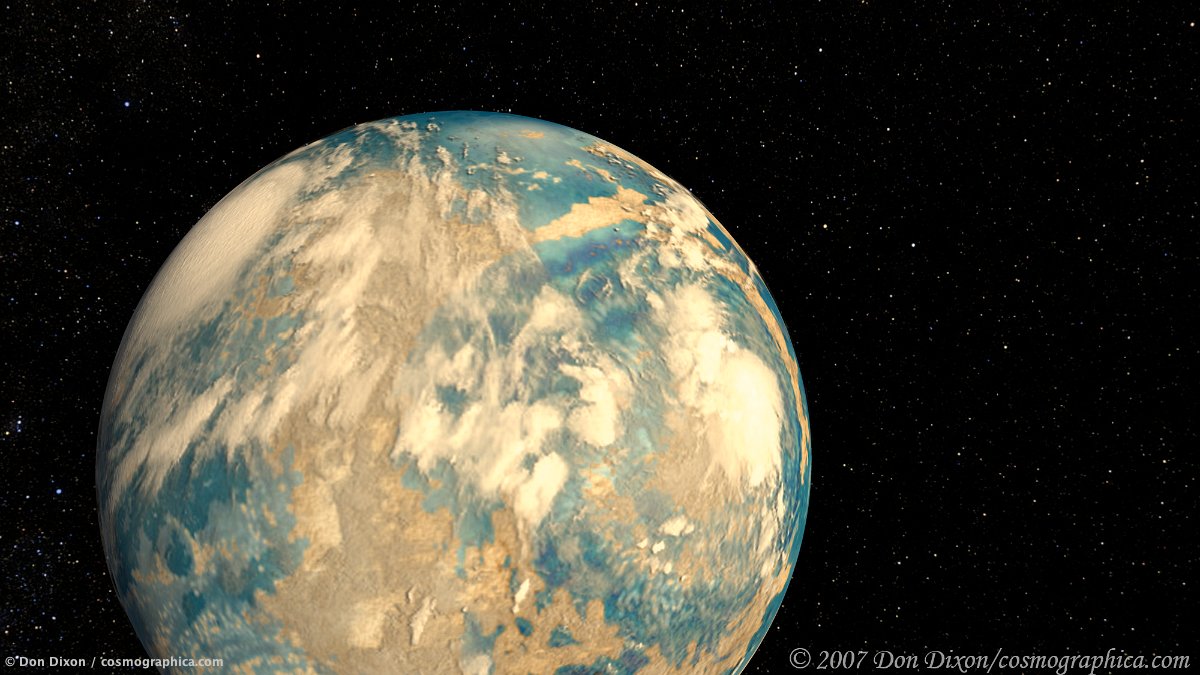
467-extrasolar-planet-Gliese581c-subsolar
If the planet is tidally locked, with the same face turned permanently toward its sun, any ocean near the subsolar point would likely simmer under a perpetual haze of steam. Weather patterns might tend to radiate from this equatorial teakettle. Digital artwork © 2007 Don Dixon / cosmographica.com
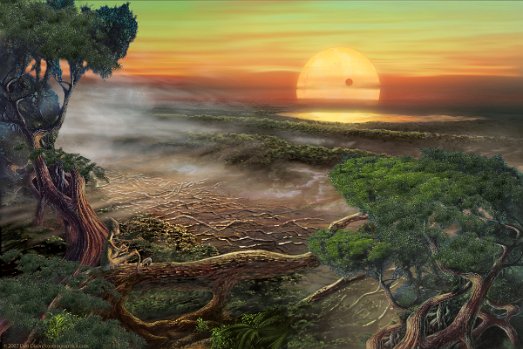
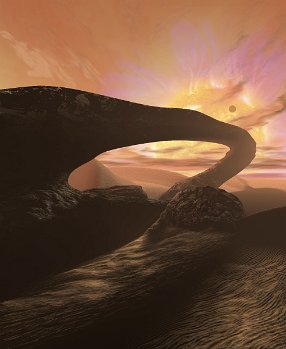
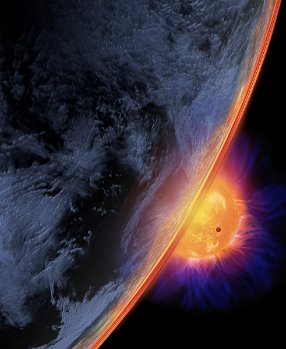
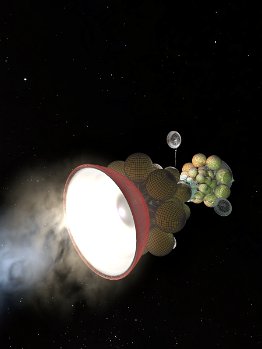
starship plan
A starship 10 miles long, capable of reaching the nearest star, Alpha Centauri, is depicted in this illustration created for the July, 2012 issue of Astronomy Magazine. To eliminate the structural stress and high-velocity ablation of interstellar gas and dust during tthe deceleration phase, the ship is designed so no turnaroung maneuver is necessary. The central torus is the "seed" of this vessel, rotating at 1 revolution per minute to create centrifugal gravity for the travelers.
501-starshade-exoplanet-telescope
A space telescope observes planets orbiting a distant star whose glare has been blocked by a flower-shaped screen the size of a football field. In reality, the starshade would be almost as far from the telescope as the moon is from earth. digital, copyright Don Dixon 2016.
489-starship-arrives-alpha-centauri-1b
A habitat two miles across arrives to orbit a hypothetical earthlike planet orbiting the star Alpha Centauri after a 50-year voyage. The discarded braking stage of the giant starship drifts in the far background. The bright star below the planet is our sun, 4.3 light years away. Interior illustration for Astronomy Magazine, July 2012. © Don Dixon
